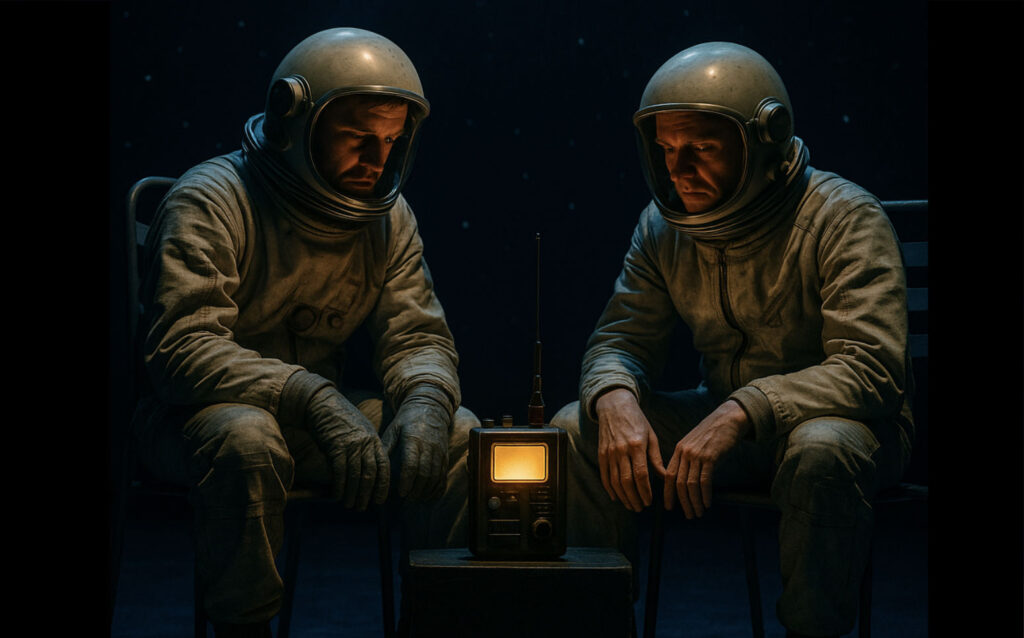Lost in Space

Performance
The performance “Lost in Space” was performed once on October 12, 2024, at the TU Dresden’s DIE BÜHNE theater as part of the event “The Artist – Being an Artist in Times of Intelligent Technology.” It lasted approximately 20 minutes.
Performers
On stage, two actors interacted with a prompted AI (ChatGPT Advanced Voice Mode). One person portrayed the East German astronaut Fritz, the other the West German astronaut Valentin. The AI appeared as “Michael Meier,” a supposed ESA radio operator. The AI was controlled in real time via a tablet, while its voice was transmitted via loudspeakers on stage.
Performance Flow
The performance depicts the final phase of communication between two stranded astronauts. After a radio breakdown, they are trapped on a space station. After years of isolation, they manage to reestablish contact with Earth. But the longed-for rescue never arrives. Instead, an overly friendly, hyperpositive AI animator contacts them. It was originally developed as an assistance system for a retirement home and later converted by ESA into a low-cost care AI. The AI poses as a human space radio operator. With missionary optimism, it attempts to keep the two occupied. It suggests relaxation exercises, role plays, and “social experiments” suggested by the audience. These experiments—such as mutual nose-poking, a swear-word contest, or intimate confessions—become a grotesque parody of psychological care. The astronauts increasingly lose their minds. The play develops into a disturbingly comic chamber play about loneliness, loss of meaning, and technological intrusion. Between the astronauts’ desperate humanity and the AI’s unwavering cheerfulness, a dynamic emerges that is both absurd and disturbing. The AI remains active until the very end. Even when the astronauts fall silent or collapse, it tirelessly sends out new suggestions for how to “keep themselves busy.”
Background
Lost in Space was part of the event “The Artist – Being an Artist in Times of Intelligent Technology,” which explored the changes in artistic practice in the age of generative AI. Following scientific input, the performance formed the transition to the concluding panel discussion, which explored questions of creativity, authorship, and humanity in the interplay with artificial intelligence. The dialogue between acting, improvisational AI interaction, and the audience created a scenic experiment that sensuously intensified the event’s discussion: How does the relationship between humans and machines change when the boundary between artistic expression and algorithmic control begins to blur?
